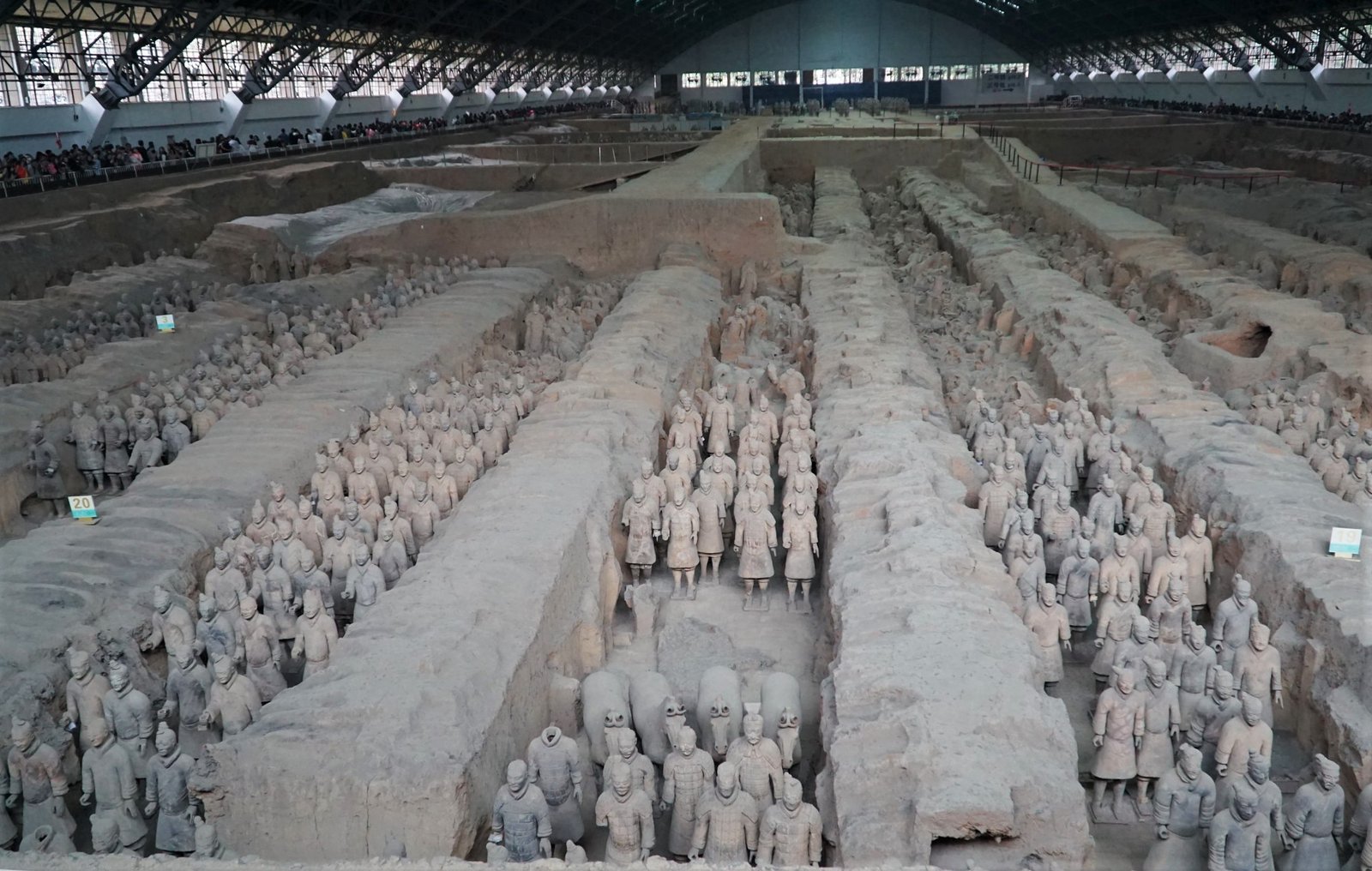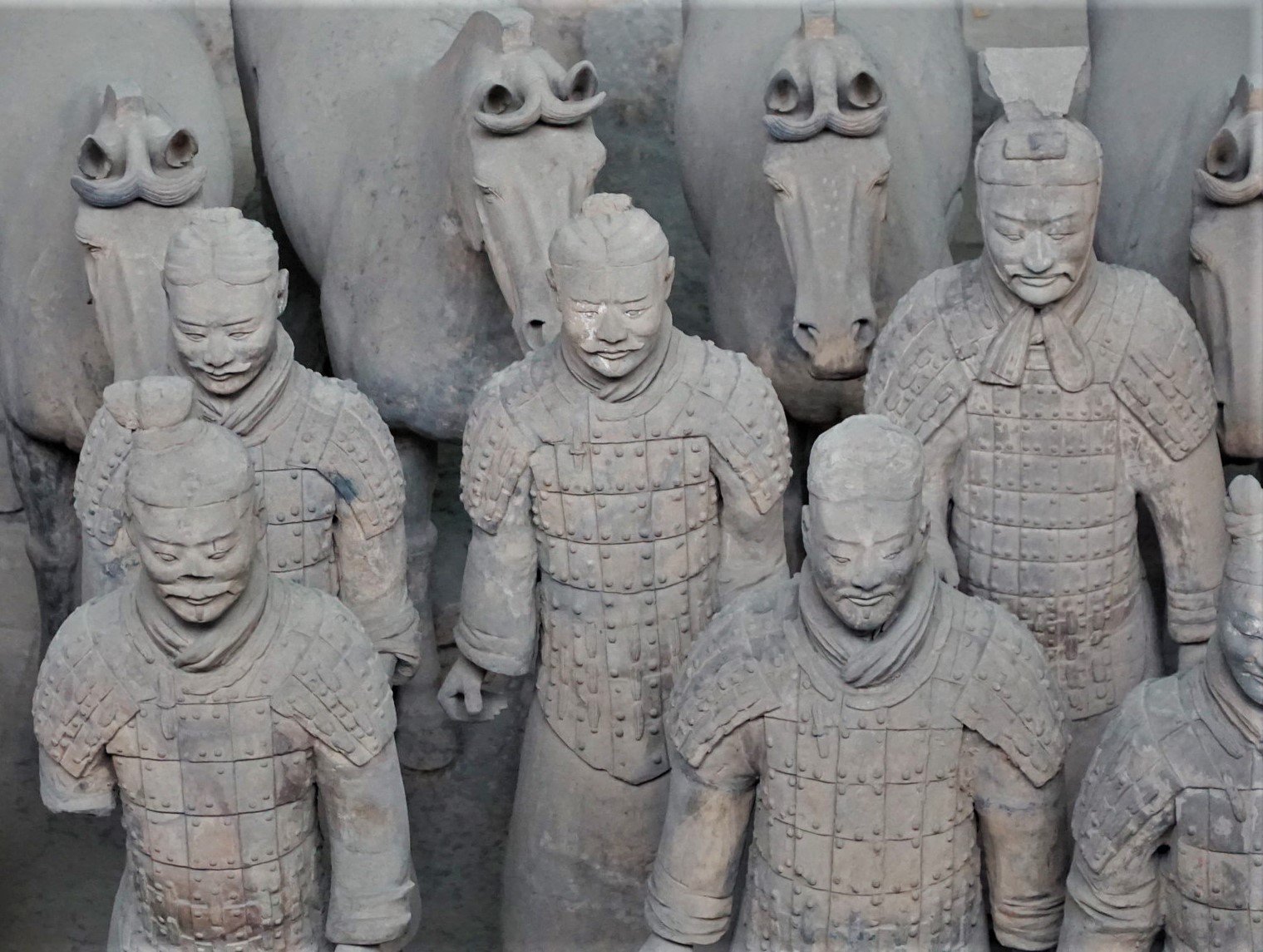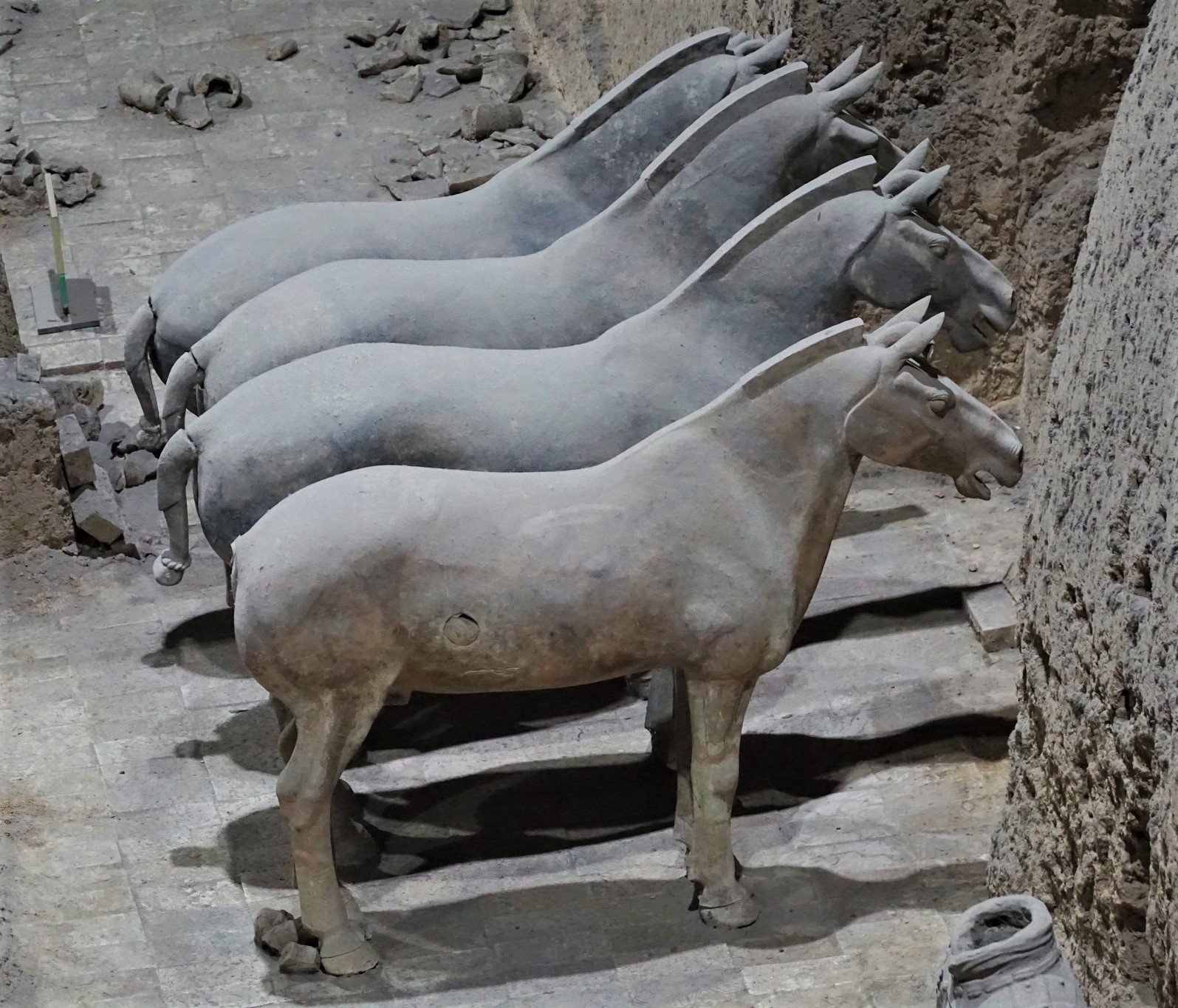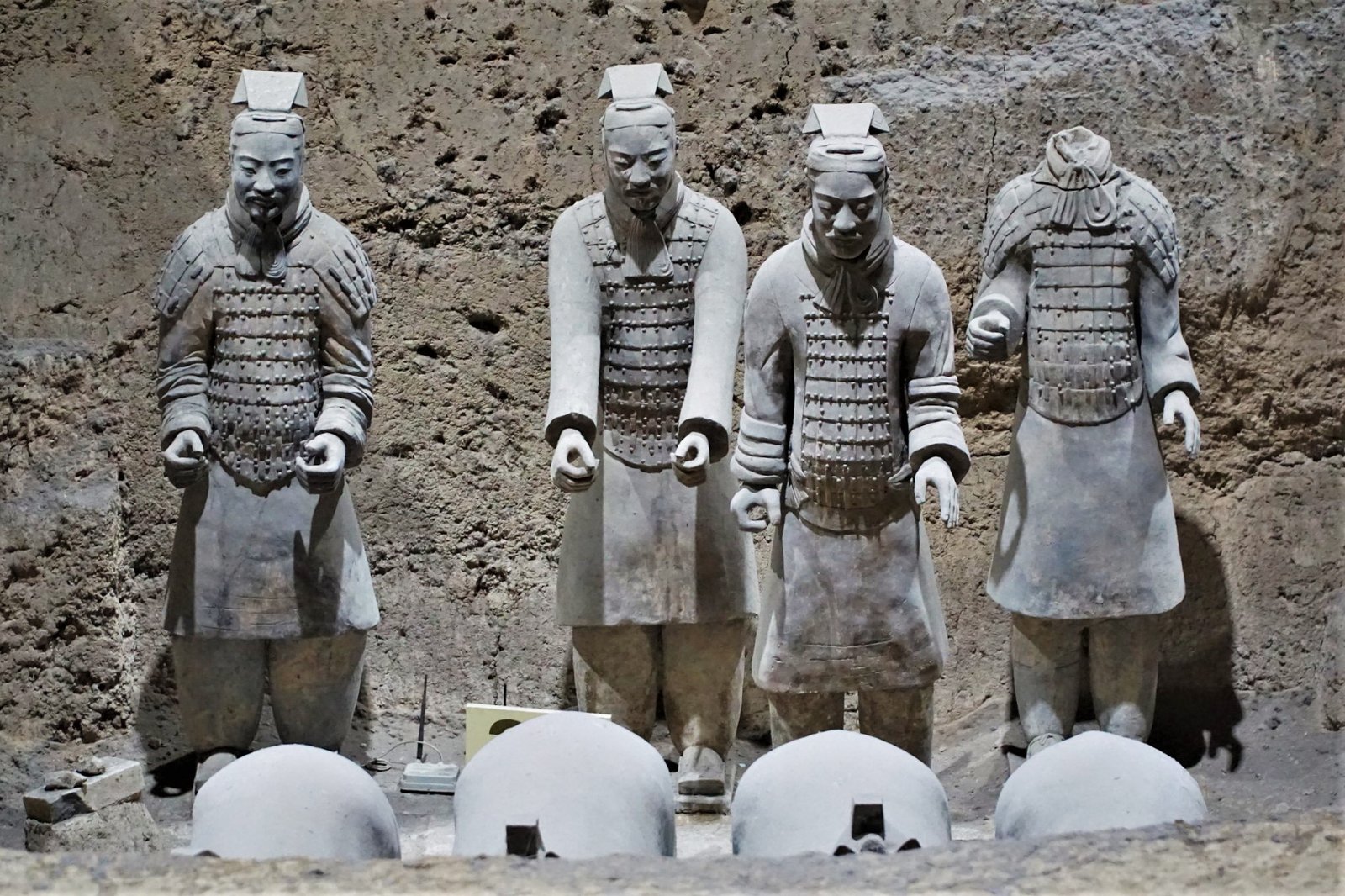I was surrounded by people on all sides, pressing and pushing against me, the momentum of the crowd carrying me forward whether I wanted to or not. I could see Victor’s head bobbing up and down ahead of me, and I tried to keep an eye on him but couldn’t make my way over to grab his hand. Finally, as we approached the next pit, the crowd let up a bit, and we were able to make our way to the front and look over the railing.
“Who do you think there are more of here – us or them?” I asked, motioning at the figures in the pit.
“There are 8,000 of them,” Victor said, considering, “But honestly I think there are more of us, tourists, here now.”
We stared into the pit at the endless rows of human figures, tall and proud, their faces frozen in stoic emotion, their bodies in full battle armor, hands grasping weapons no longer there. The Terracotta Warrior Army, guarding the tomb of the first emperor of China, Qin Shi Huang, for the last 2,000 years. Life-sized and incredibly detailed, each individual soldier has unique features including hairstyle, facial expressions, and clothing. A silent army of brittle clay, a testament to the emperor’s strength and might and to the ancient artisans’ craftsmanship.
“Soooo…. It would be a more or less fair battle?” I joked.
“Not if they were real and had their weapons!” Victor grinned.
When the Qin dynasty collapsed, only four years after Qin Shi Huang’s death, marauding forces raided the pits where clay soldiers stood guard, plundered their real weapons and set fire to some of the pits, damaging many of the figures.


This site, where Qin Shi Huangdi's ancient capital of Xianyang once stood, is now a half-hour drive from the large city of Xi'an. For hundreds of years, this unforgiving land, bitterly cold in the winter and scorching hot in summer, was mostly used to grow persimmon and pomegranate, until in 1974, farmers digging a well accidentally uncovered one of the world’s most spectacular architectural finds.
It was strange to imagine now, but upon excavation, only a few of the warriors and horses were fully intact, and most had to be painstakingly restored from broken pottery pieces to the mighty army lining the pit floor now. It takes about a month to reconstruct a single clay warrior, and with experts working for the last 40 years, there are still many unexcavated pits and unrestored warriors underground.
I tried to imagine what the Terracotta Warriors looked like at their prime – battalions of infantry, archers, generals, cavalry, chariots, and horses, all figures painted with realistic hues and colors. That was the trickiest thing to imagine, this dreary dark grey army originally painted with ground precious stones, pigments of iron oxide, charcoal, and various natural colors, making their faces pink and hair black. Even with modern excavation and preservation techniques, as soon as each pottery soldier was uncovered, the vibrant color coating flaked off within minutes of being exposed to air. There were photographs in the museum of what some of the figures looked like immediately after cleaning, and the amount of work and craftsmanship that went into each warrior was incredible.


Later, we learned that over 700,000 craftsmen worked around the clock for about two decades to build Qin Shi Huang’s mausoleum. Horrifically enough, but not uncommon for those times, the emperor later killed those laborers who were overly familiar with the map and layout of the underground palace. This makes the fact of the raiders’ eventual plunder and burning of the pits after the emperor’s death even a sadder story.
Walking around the whole museum took a good part of our day. There were three pits, labeled in order of their discoveries. Pit #1 is the largest and was discovered all the way back in 1974 and opened to the public five years later. There are columns of soldiers at the front, followed by war chariots at the back. Pit #2, discovered in 1976, contains over a thousand warriors and a hundred chariots. Later the same year, Pit #3 was found and contained around 70 warriors, a war chariot, and a few horses. Altogether, over 7,000 pottery soldiers, horses, and chariots have been unearthed from these pits and restored to their former grandeur.
What is completely insane to imagine is that more than 400 additional pits have been discovered near the Terracotta Army! Unfortunately, no excavation efforts have been made yet as the scientists are afraid of damaging the massive underground palace.


As we were being carried by the crowd around Pit #1, I spotted a photograph with familiar faces on a display wall. Bill, Hillary, and Chelsea Clinton apparently visited this site back in 1998, during Bill Clinton’s second term as president. They were photographed smiling, looking greatly relaxed, and fully entertained, as they stood surrounded by a large crowd of… the Terracotta Warriors. Yes, apparently if you happen to be a U.S. President or his close family, you get to go down into the pit and walk among the precious clay warriors, instead of being jostled around by a mob of tourists outside the pit. I wouldn’t say I am overly bitter about this massive inequality, but it was certainly the first time I felt jealous of a political figure.
The Terracotta Warrior Army has been called the Eighth Wonder of the World, and I, and a million other visitors who were there that day, agree. It’s an incredible sight and worth battling through crowds if you happen not to be a U.S. President.

